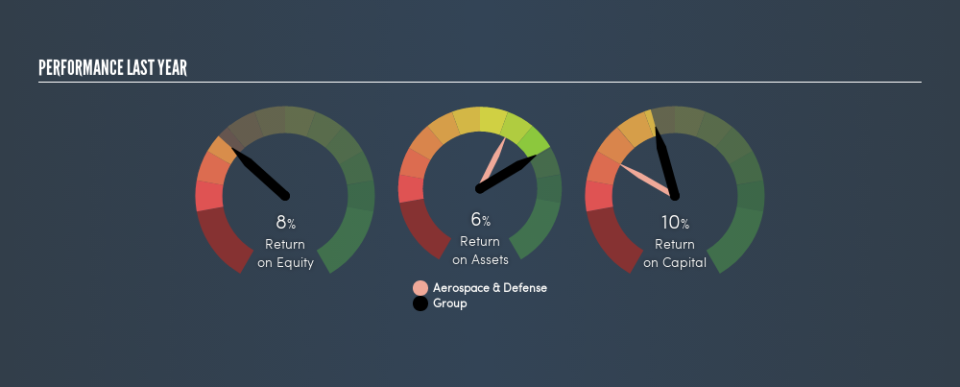Is PTB Group Limited’s (ASX:PTB) 10% ROCE Any Good?

Today we are going to look at PTB Group Limited (ASX:PTB) to see whether it might be an attractive investment prospect. Specifically, we're going to calculate its Return On Capital Employed (ROCE), in the hopes of getting some insight into the business.
First of all, we'll work out how to calculate ROCE. Then we'll compare its ROCE to similar companies. Last but not least, we'll look at what impact its current liabilities have on its ROCE.
Return On Capital Employed (ROCE): What is it?
ROCE measures the 'return' (pre-tax profit) a company generates from capital employed in its business. In general, businesses with a higher ROCE are usually better quality. In brief, it is a useful tool, but it is not without drawbacks. Author Edwin Whiting says to be careful when comparing the ROCE of different businesses, since 'No two businesses are exactly alike.'
So, How Do We Calculate ROCE?
The formula for calculating the return on capital employed is:
Return on Capital Employed = Earnings Before Interest and Tax (EBIT) ÷ (Total Assets - Current Liabilities)
Or for Group:
0.10 = AU$6.3m ÷ (AU$80m - AU$17m) (Based on the trailing twelve months to December 2018.)
So, Group has an ROCE of 10%.
See our latest analysis for Group
Is Group's ROCE Good?
ROCE can be useful when making comparisons, such as between similar companies. Group's ROCE appears to be substantially greater than the 8.1% average in the Aerospace & Defense industry. We would consider this a positive, as it suggests it is using capital more effectively than other similar companies. Aside from the industry comparison, Group's ROCE is mediocre in absolute terms, considering the risk of investing in stocks versus the safety of a bank account. It is possible that there are more rewarding investments out there.
In our analysis, Group's ROCE appears to be 10%, compared to 3 years ago, when its ROCE was 4.8%. This makes us think about whether the company has been reinvesting shrewdly. The image below shows how Group's ROCE compares to its industry, and you can click it to see more detail on its past growth.
When considering this metric, keep in mind that it is backwards looking, and not necessarily predictive. Companies in cyclical industries can be difficult to understand using ROCE, as returns typically look high during boom times, and low during busts. ROCE is only a point-in-time measure. How cyclical is Group? You can see for yourself by looking at this free graph of past earnings, revenue and cash flow.
How Group's Current Liabilities Impact Its ROCE
Current liabilities are short term bills and invoices that need to be paid in 12 months or less. The ROCE equation subtracts current liabilities from capital employed, so a company with a lot of current liabilities appears to have less capital employed, and a higher ROCE than otherwise. To counteract this, we check if a company has high current liabilities, relative to its total assets.
Group has total liabilities of AU$17m and total assets of AU$80m. As a result, its current liabilities are equal to approximately 22% of its total assets. This is a modest level of current liabilities, which would only have a small effect on ROCE.
The Bottom Line On Group's ROCE
That said, Group's ROCE is mediocre, there may be more attractive investments around. You might be able to find a better investment than Group. If you want a selection of possible winners, check out this free list of interesting companies that trade on a P/E below 20 (but have proven they can grow earnings).
If you like to buy stocks alongside management, then you might just love this free list of companies. (Hint: insiders have been buying them).
We aim to bring you long-term focused research analysis driven by fundamental data. Note that our analysis may not factor in the latest price-sensitive company announcements or qualitative material.
If you spot an error that warrants correction, please contact the editor at editorial-team@simplywallst.com. This article by Simply Wall St is general in nature. It does not constitute a recommendation to buy or sell any stock, and does not take account of your objectives, or your financial situation. Simply Wall St has no position in the stocks mentioned. Thank you for reading.

